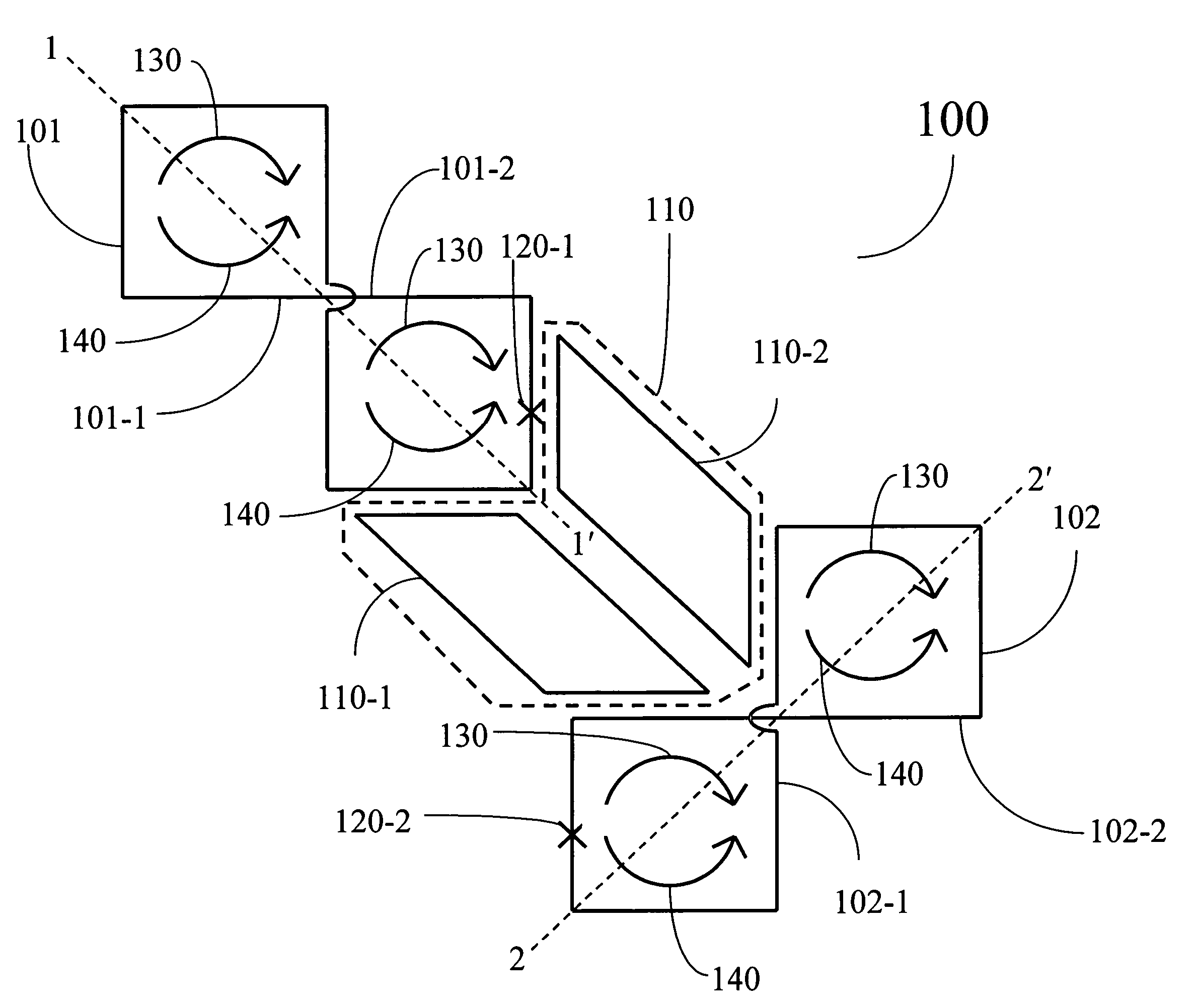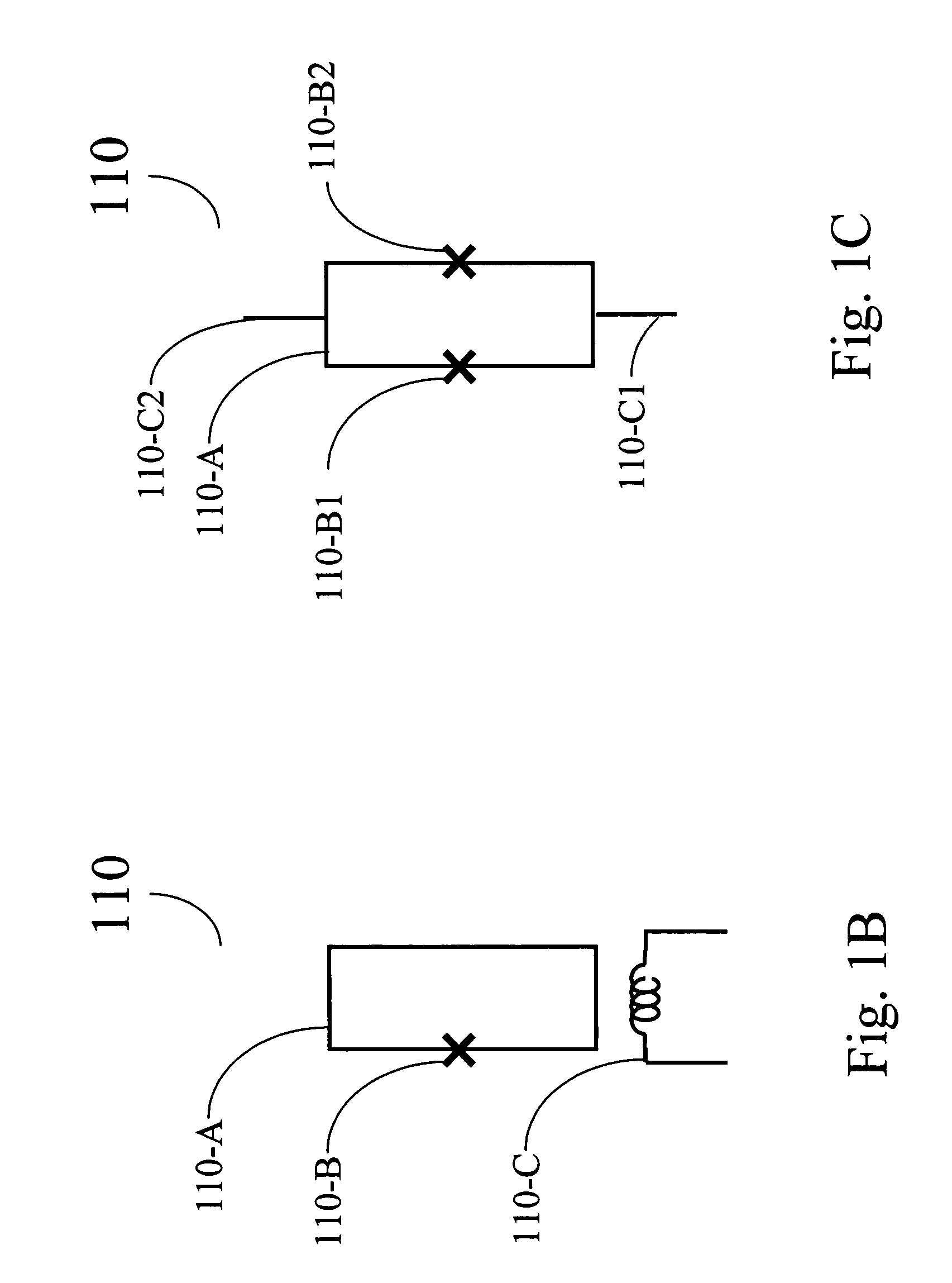Coupling methods and architectures for information processing
a technology of information processing and methods, applied in the field of quantum computing, can solve problems such as the identification of methods, the reduction of the decoherence of qubits, and the identification of systems that can support quantum computation
- Summary
- Abstract
- Description
- Claims
- Application Information
AI Technical Summary
Benefits of technology
Problems solved by technology
Method used
Image
Examples
example 1
Tunable Coupling of Flux Devices Through an rf-SQUID Transformer
[0120]FIG. 5 illustrates how the dynamics of three rf-SQUIDs 510-a, 510-b, and 510-c, including the tunability of the sign of coupling, can be modeled by an analysis beginning at the classical potential of the rf-SQUIDs. In this example, a, b, c-SQUID or a, b, and c denote rf-SQUIDs 510-a, 510-b, and 510-c, respectively. Hereafter, in this example a, b, and c as a superscript, subscript, or connected to a value or term by a hyphen denotes a value in relation to rf-SQUIDs 510-a, 510-b, and 510-c. Values and quantities drawn to these rf-SQUIDs include but are not limited to:
[0121]L, the rf-SQUID inductance;
[0122]B, the dimensionless SQUID inductance (defined to be equal to 2πLIc / φ0 in SI units, when =1 this becomes 4e2LE);
[0123]C, the rf-SQUID capacitance;
[0124]Ic, the critical current of the rf-SQUID;
[0125]E,therf-SQUIDJosephsonenergy(definedtobeh2eIc);
[0126]Ij, the current of rf-SQUID 510-j, where j=a,...
example 2
Tunable Coupling of Flux Devices Through a dc-SQUID Transformer
[0151]This example analyzes the set-up depicted in FIG. 7, specifically that of two rf-SQUID flux devices 710-a and 710-c coupled with dc-SQUID 710-b. In the example, a, b, c-SQUID or a, b, and c denote rf-SQUID 710-a, dc-SQUID 710-b, and rf-SQUID 710-c, respectively. Hereafter, in this example a, b, and c as a superscript, subscript, or connected to a value or term by a hyphen denotes a value in relation to SQUIDs 710-a, 710-b, and 710-c. Values and quantities drawn to these SQUIDs include
[0152]L, the SQUID inductance;
[0153]β the dimensionless SQUID inductance (defined to be equal to 2πLIc / Φ0 in SI units; when =1 this becomes 4e2LE);
[0154]C, the SQUID capacitance;
[0155]Ic, the SQUID's critical current;
[0156]E, the SQUID Josephson energy
[0157](definedtobeh2ⅇIc);
[0158]Ij, the current of SQUID 710-j, where j=a, b1, b2, or c;
[0159]Φj, the flux of SQUID 510-j, where j=a, b1, b2, or c;
[0160]φj, the dimensionless flux;...
example 3
Details and Fabrication of an rf-SQUID
[0175]In some embodiments of the present invention, rf-SQUIDs are used that comprise a superconducting loop that has an inductor and that is interrupted by a single Josephson junction such that the inductor and Josephson junction are in parallel as illustrated in FIG. 11. For a given fabrication process, the Josephson junction is parameterized by its critical current IC, the amount of current it can carry without any dissipation. The rf-SQUID design is then parameterized by the ICL product, where L is the inductance, or its dimensionless inductance 2πLIC / Φ0, where Φ0 is the flux quantum.
[0176]The behavior of the rf-SQUID is described in terms of its response to externally applied flux that is coupled into the SQUID's inductor. For a given applied flux, a circulating current is induced in the SQUID which corresponds to a particular flux state of the SQUID. For values of dimensionless inductance greater than 1, the rf-SQUID can be multi-stable, me...
PUM
 Login to View More
Login to View More Abstract
Description
Claims
Application Information
 Login to View More
Login to View More - R&D
- Intellectual Property
- Life Sciences
- Materials
- Tech Scout
- Unparalleled Data Quality
- Higher Quality Content
- 60% Fewer Hallucinations
Browse by: Latest US Patents, China's latest patents, Technical Efficacy Thesaurus, Application Domain, Technology Topic, Popular Technical Reports.
© 2025 PatSnap. All rights reserved.Legal|Privacy policy|Modern Slavery Act Transparency Statement|Sitemap|About US| Contact US: help@patsnap.com



